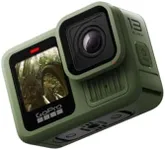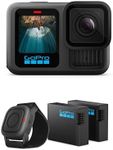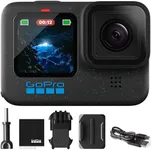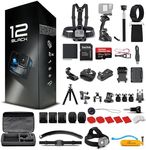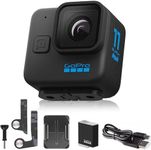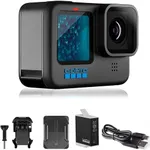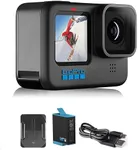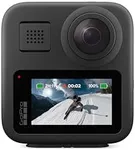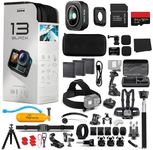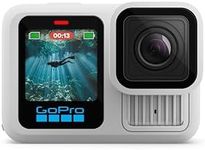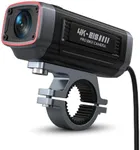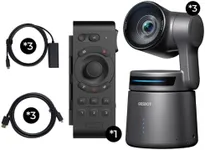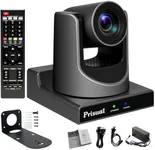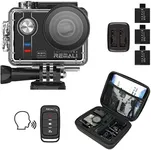Buying Guide for the Best Gopros
When choosing a GoPro or similar action camera, it’s important to think about what you plan to use it for and where you’ll be using it. Are you a casual user wanting to capture memories, or are you an adventurer looking to film extreme sports? Consider where you’ll mount the camera and what kinds of conditions it will face. Understanding your main needs will help you focus on the features that make the most difference, making your decision easier and ensuring you get the best value and performance for your needs.Video ResolutionVideo resolution affects the clarity and detail in your footage. Higher resolutions like 4K or 5K deliver sharper images, which is especially useful if you plan to view your videos on large screens or crop your footage later. Lower resolutions, such as 1080p, use less storage and make sharing easier, which suits casual users. If you're mainly using the camera for everyday moments and don’t require cinematic quality, 1080p or 1440p works well. If you want professional-looking videos or plan to edit your footage heavily, aim for 4K or above.
Frame RateThe frame rate decides how smooth your videos look, measured in frames per second (fps). A standard 30fps looks natural for most scenes. A higher frame rate, such as 60fps, makes fast movements look smoother and allows for slow-motion playback. For regular scenes, standard frame rates are enough. If you want to highlight action or use slow-motion effects—for example, in sports or adventure footage—choose a higher frame rate. Only pick the high-speed settings if you truly need ultra-smooth or slow-motion playback.
StabilizationStabilization helps keep your videos smooth even when the camera shakes or moves around, which is common during biking, running, or other action shots. Good stabilization means your videos will look much steadier and more professional, even if you’re moving a lot. If you’re planning to use your camera for active or handheld shots, prioritize strong stabilization. For mainly static or tripod use, you can afford to have less advanced stabilization.
Waterproof RatingThe waterproof rating tells you how deep the camera can safely go underwater without extra housing. Cameras that are waterproof up to 10 meters are fine for swimming and casual snorkeling. If you plan on deep-sea diving or extended underwater use, look for higher ratings or compatible waterproof housing. Consider your expected activities: if you spend a lot of time in or around water, higher waterproof capability is a must.
Battery LifeBattery life decides how long you can film before needing to recharge. Action cameras tend to have smaller batteries, so think about how long your typical session will be. If you plan to film for many hours at a time, look for longer battery life or the option to swap batteries easily. For short, quick clips, standard battery life should be fine. If you travel or adventure far from charging points, prioritize cameras with easily replaceable batteries.
Mounting OptionsMounting options concern how easily and securely you can attach the camera to helmets, handlebars, tripods, or other gear. A camera with more mounting options and compatibility lets you get creative with camera angles and positions. If you want flexibility for various activities or sports, check for a wide range of reliable mounts. Simpler setups with few attachments are enough if you mainly plan to use the camera handheld or on a single mount.
User Interface and ControlsHow you interact with your camera can make a big difference, especially when you’re on the move. Touchscreens are user-friendly but can be tricky when wet or with gloves. Physical buttons are better for wet or extreme environments. Voice control can help when your hands are occupied. Think about how you’ll usually be using the camera, and pick the user interface that matches your style and environment.
